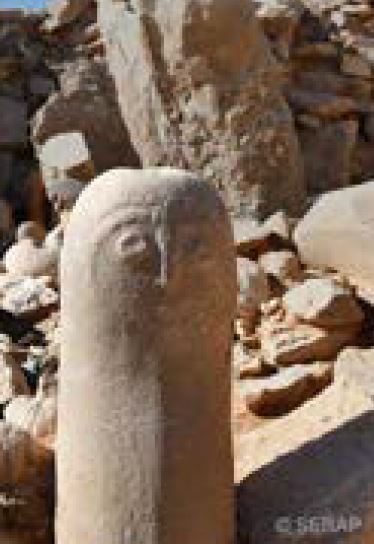Desert kites
Publish date 19-08-2022
A team of Jordanian and French archaeologists have discovered a series of traps for intensive hunting, called "desert kites" on Khashabiyeh Mountain in Jordan. The structures date back to 9,000 years ago and are associated with an area with a ritual character.
The "desert kites", traps for the intensive hunting of herds of gazelles or deer, are stone walls converging in a funnel towards a narrow passage, beyond which there is an enclosure.
The herds of animals were herded by hunters into the fenced area and then slaughtered.
Traps of this type were already known in the region, but recent excavations by the South Eastern Badia Archaeological project have been able to backdate these structures by 3,000 years, assigning them to the Neolithic. In addition to the perfect state of conservation and the chronology, what makes this site important is also the discovery in the same area both of the camp where the hunters were based, and of a dedicated place of worship. In the inhabited site, archaeologists have found rich and varied artifacts, with a specific lithic industry that led to the definition of a specific cultural entity, called the Ghassanian. In the sanctuary, archaeologists have found two standing stones, carved with human faces and a complex deposit of materials, arranged with a precise ritual intent.
It consists of 150 marine fossils, positioned vertically according to precise patterns, various stones with unusual natural designs, animal sculptures and flint tools.
The overall panorama of the research suggests the Ghassanian culture as hunters specialized in the intensive hunting of gazelles and deer through traps made for the purpose, testifying the ability to organize complex collective activities. Archaeologists think that, since the prey hunted with this method went beyond the group's food needs, they also served to be traded with neighboring regions. In addition, the presence of the sanctuary, which reproduces the structure of the "desert kites" in a small way, testifies to the also ritual importance of this activity.
Agnes Picco
NP April 2022








